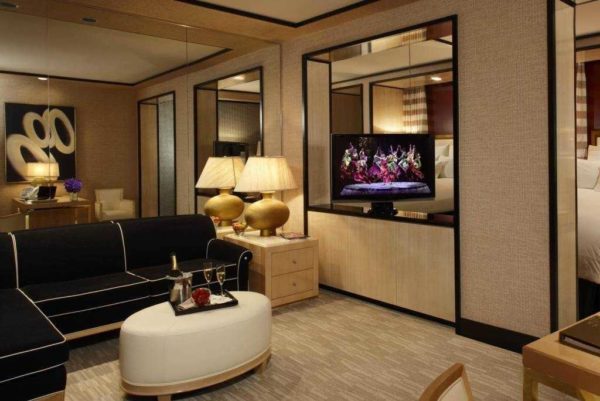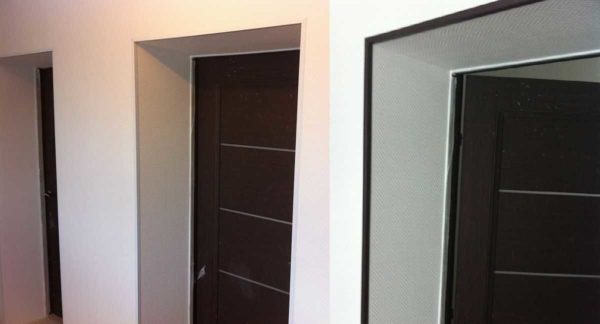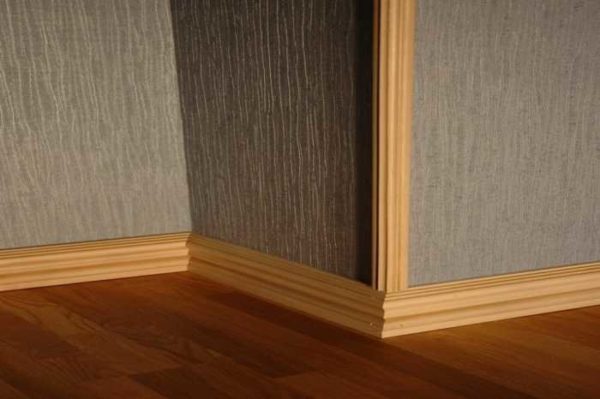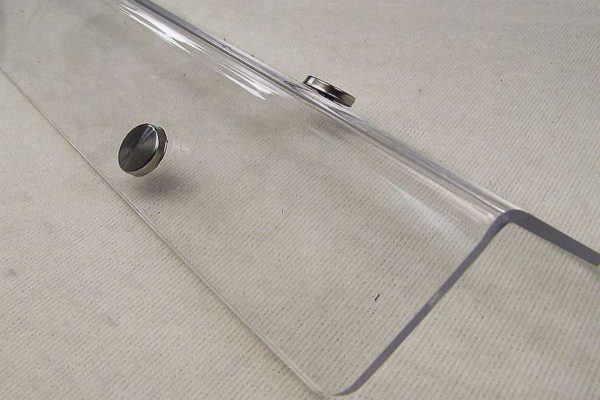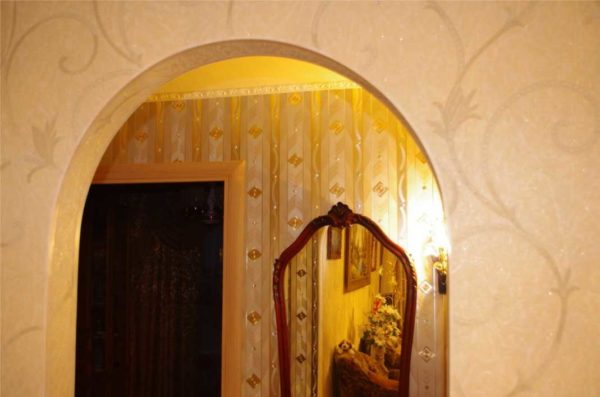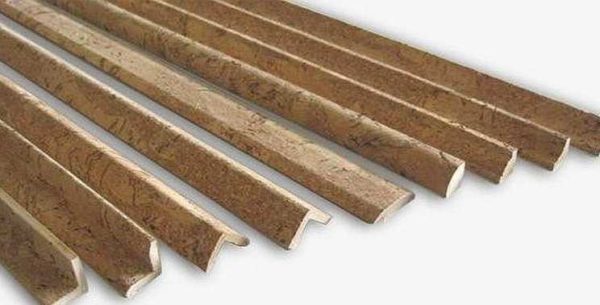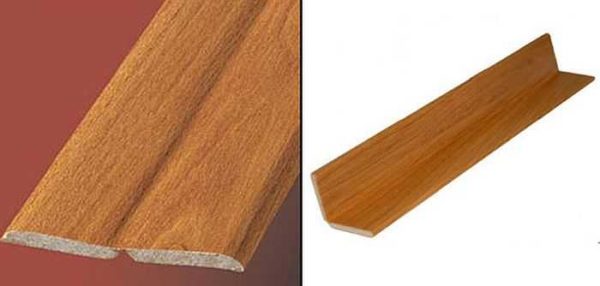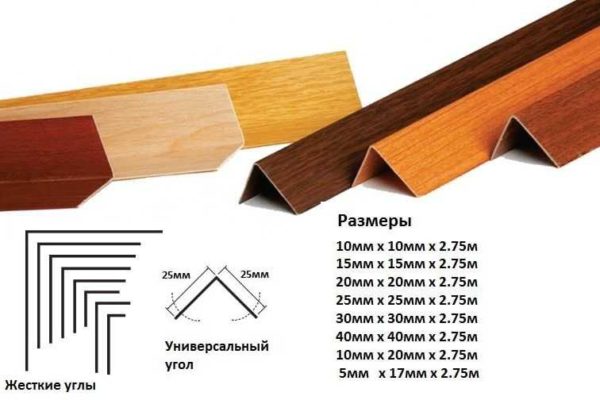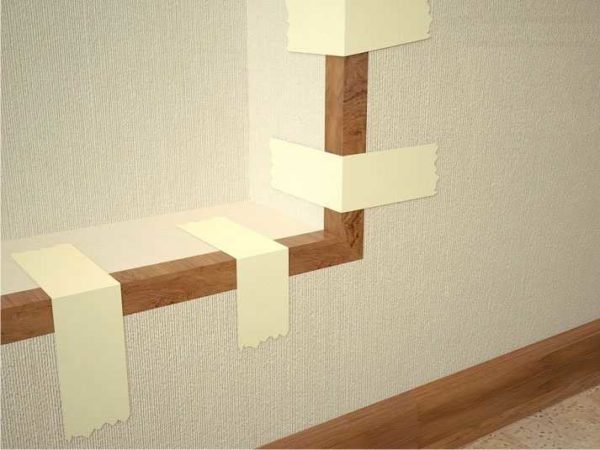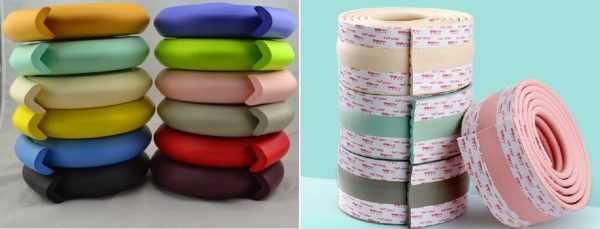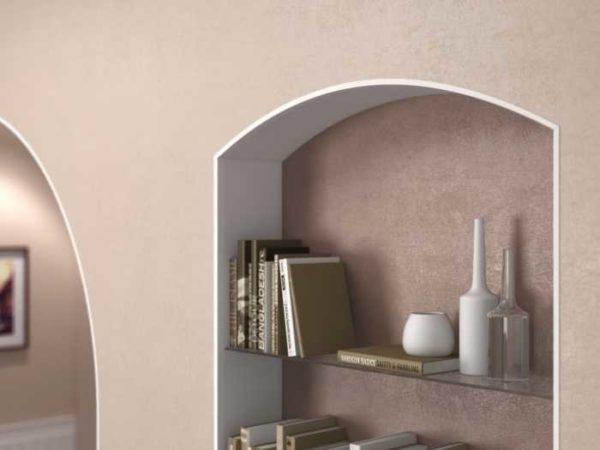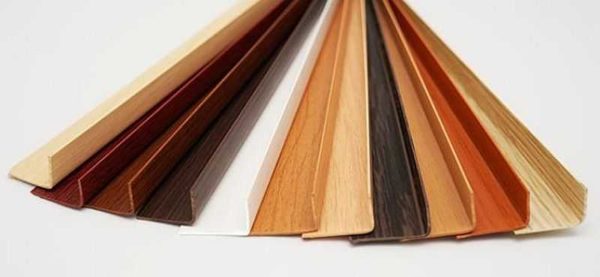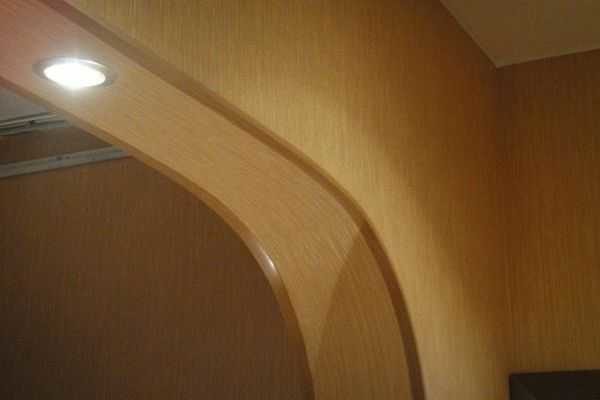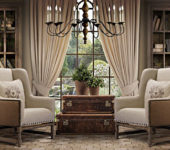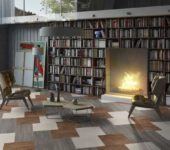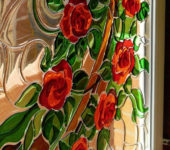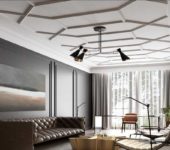Decorating slopes with decorative plastic corners
Papered and plastered outer corners need protection. Wallpaper from frequent contact is overwritten, the putty is destroyed. You can solve the problem with decorative corners. The corners to protect the corners of the walls can be of different materials.
The content of the article
Corners for protecting wall corners: selection options
This technique of decorating the corners of the walls - protective corners - not everyone likes, but there are no special alternatives. In any case, on the walls covered with wallpaper, the corner is still better than sticking out and torn canvases.
There is only one solution to the integrity of the wallpaper without the use of decorative corners - to make not an acute angle of the slope, but a rounded one. In this case, there will be no problem with its finishing. You can simply wrap the wallpaper without cutting it. But you need to bring out the corner perfectly, otherwise you will have to cut it again, which means that the question of protecting the wallpaper joint on the corner will again arise.
It is important to choose the right decorative corner so that it does not look alien. There are special techniques for this.
It is necessary to choose corners to protect the corners of the walls based on the general design of the room. There are several standard solutions:
- Matching with wall decoration. A complete match of color is desirable, and even better if the texture is similar.
- To match the doors. It is better to choose the same material - wood, MDF. And pick up the color one to one. This technique is often used in hallways and corridors where there are many doors. In rooms, it is more appropriate to match the tone of the walls.
- In that with skirting boards.
- Use one of the complementary colors (read about the combination of colors in the interior here), which will be not only at the corners, but also in the frame of paintings or in the upholstery of panels, decorative medallions, etc.
- One color and texture with flooring.
In general, choosing corners to protect the corners of the walls should be tied to the design of the room. This can be done after the furniture and textiles are placed. In this case, it is easier to imagine the end result. Because the picture in our head can be very different from reality.
If you can't find an acceptable color in any way, but you need to protect the corners in the apartment, pay attention to the transparent plastic corners. They are of different types - rigid, flexible, with different wall thicknesses.
Types of protective corners: from what materials
According to the area of application, the corners are for external (outdoors) and internal use. For now, let's talk about how to protect corners in an apartment and a house - indoors. Let's start with the materials. Corners for protecting wall corners can be:
- Made of plastic (PVC). Different colors, textures, there are even transparent ones.
- Made of metal. Brass, aluminum (polished and not), stainless steel, painted or unpainted.
- Wooden. Made of different types of wood, smooth, with a relief.
- MDF. Imitation of various types of wood, plain colored, with various patterns.
- From the cork. It can be an interesting move if you add cork trim beyond the corners.
- Rubber. Usually used in hospitals or kindergartens. Perfectly protects garage corners.
- Foamed rubber. Same as rubber, but softer. Suitable for protecting too active children from injury.
- Decorative - with carvings, rhinestones, patterns, etc.
The most popular are plastic corners to protect the corners of the walls.Do not think that such protection looks pathetic. In any case, no worse than frayed corners. It's just that the plastic is different in appearance - polished, with a metallized effect, with a satin (matte) surface, with a different relief. It is clear that in order to find something specific or special, you will have to run around the hardware stores and markets. But there are many types of design. If the corners to protect the corners of the walls are selected correctly, they organically fit into the design, absolutely not attracting attention. At the same time, the joints are protected and decorated very reliably.
Shapes and sizes
The finished corners usually have a 90 ° angle. The corner itself is not always sharp, there are options with a rounded one. By type, the corners for protecting the corners of the walls are divided into:
- tough
- external;
- internal;
- flexible (plastic, rubber)
- universal.
Questions can only be universal. These are two strips of plastic or MDF connected by a thin strip of flexible material of the same color. Thanks to this connection, you can make an obtuse or acute angle, internal or external - without much difference. But in terms of protection reliability, it is inferior to rigid ones - after all, the flexible part is quite thin.
It is also worth knowing that the corners can be with shelves of the same and different width. More often they are found with the same, but it is quite possible to find those in which one is wider, the other is narrower.
The shelf width differs from manufacturer to manufacturer. Plastic, for example, can have shelves from 10 mm to 50 mm. MDF corners are minimally made with a shelf width of 20 mm, metal corners - from 10 mm, but the maximum shelf length is 90 mm (aluminum). So there is plenty to choose from.
What to mount
The choice of the method of attaching the corners to protect the corners of the walls depends on the material of the corner, on what surface they will be attached to. The most commonly used glue. Moreover, the leaders are “liquid nails”. This is a universal compound, but check that the specific brand can adhere the materials you need before buying.
You can put a corner on the glue if it is even, without major flaws. If there are pits / depressions, you are unlikely to glue it. In this case, silicone can be used. If you glue white corners, you can use white silicone. Under the color it is better to take transparent. It is not always desirable to use acidic. Although cheaper, it can damage metals or paint.
In both cases, the wall and corner must be clean and dry. The composition is applied to the corner, it is pressed against the corner, fixed with strips of masking tape. We grab it after 40-60 cm. If everything is even, it is possible after 60 cm, if it is necessary to repeat the shape, after 40 cm or even more often.
Leave in this state until the glue dries or the silicone hardens. See the package for the exact time. Then the masking tape can be removed. It differs from ordinary adhesive tape in that it peels off even from paper wallpaper without damaging the surface. But to be sure, try sticking and peeling in an inconspicuous place.
There is another option for how you can glue the corners on the wall with wallpaper, painting. You can use double-sided tape. Glue it first to the corner, then, after removing the protective coating, press it to the corner. There are corners to which the tape is already glued. Certain types of foam rubber or plastic (usually flexible or versatile).
Arch decoration
Arch design is often a problem. In general, there are not so many outside corners in the apartment, but they are mandatory on the arch. And in the aisle, they very often hurt. Either with furniture, then with another load, or simply a resident who did not fit into the opening. And if there are no questions with the direct part, then the rounded part can be a problem.
In general, universal corners can be used for the arch. They are flexible, which is very convenient.There are flexible non-universal ones - plastic, made of a special polymer of increased elasticity.
But in general, corners with different widths of shelves are used to decorate arches. They are even called arched. They have one shelf 10 mm (outer), the second - inner - 30 mm and more. They bend easily. Do not twist into a donut, but it is easy to get any curvature of an arc. It will only be necessary to use a secure fixation while the glue dries.
If you want to bend an ordinary corner, you can do this by heating the plastic. For this job you need a building hair dryer. Regular - for hair - will not work, since its temperature is too low. We also need a template according to which we will bend the plastic corner. Take a piece of fiberboard, screw in screws or hammer in nails, forming the profile you need.
Bending starts from the middle. Warm up the area by constantly pressing on the middle, and with a hairdryer moving from the center to the edges. So it is necessary to bring the corner to the desired curvature and leave it in this position to cool. So that it does not straighten, holes are made for the second row in parallel with a number of self-tapping screws. The distance between the rows is equal to the width of the corner shelf. After the plastic is bent, insert and slightly tighten the screws. After the plastic has cooled, remove them.
How to cut finishing corners
Almost always, the corners have to be cut to protect the corners of the walls. They are sold in slats from 2 to 3 meters long. The cutting tool is selected depending on the type of material. For wood and metal, thick plastic, you will need a hacksaw, but the cloth is different - for wood, and with a small tooth for metal or thick-walled plastic.
Thin plastic can be cut with a construction or office knife, sharp scissors. If you want to cut perpendicularly, it is easier to use scissors. We cut them to the corner on both sides, bend the corner, cut the remaining millimeters with a clerical knife. If there are flaws, they can be easily corrected with the same knife or sandpaper with a very fine grain (polishing).
If the plastic corner needs to be cut along the fold, we cut it along the inner corner with a clerical knife. It does not make sense to cut through the entire thickness. You just need to leave a noticeable strip. Then bend the piece to be removed. It comes off at the cut. Remove irregularities with a knife or sandpaper.

